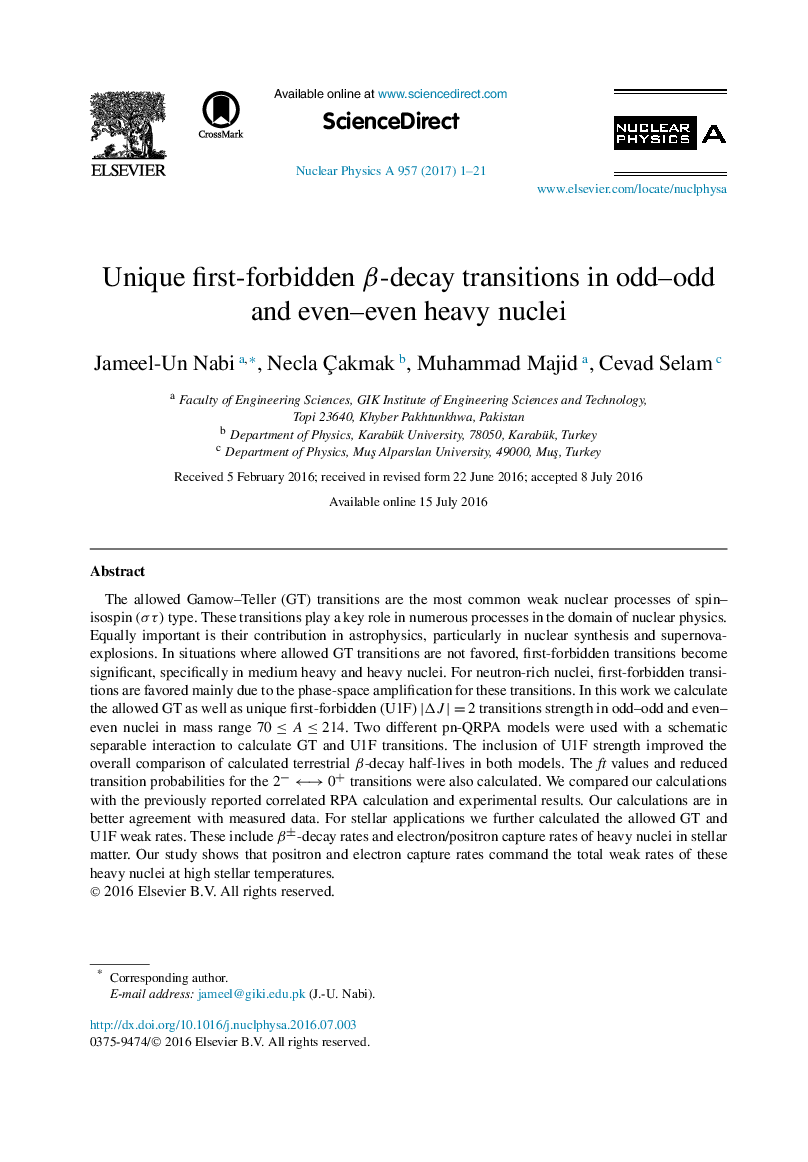| Article ID | Journal | Published Year | Pages | File Type |
|---|---|---|---|---|
| 1835974 | Nuclear Physics A | 2017 | 21 Pages |
Abstract
The allowed Gamow-Teller (GT) transitions are the most common weak nuclear processes of spin-isospin (ÏÏ) type. These transitions play a key role in numerous processes in the domain of nuclear physics. Equally important is their contribution in astrophysics, particularly in nuclear synthesis and supernova-explosions. In situations where allowed GT transitions are not favored, first-forbidden transitions become significant, specifically in medium heavy and heavy nuclei. For neutron-rich nuclei, first-forbidden transitions are favored mainly due to the phase-space amplification for these transitions. In this work we calculate the allowed GT as well as unique first-forbidden (U1F) |ÎJ|=2 transitions strength in odd-odd and even-even nuclei in mass range 70â¤Aâ¤214. Two different pn-QRPA models were used with a schematic separable interaction to calculate GT and U1F transitions. The inclusion of U1F strength improved the overall comparison of calculated terrestrial β-decay half-lives in both models. The ft values and reduced transition probabilities for the 2ââ·0+ transitions were also calculated. We compared our calculations with the previously reported correlated RPA calculation and experimental results. Our calculations are in better agreement with measured data. For stellar applications we further calculated the allowed GT and U1F weak rates. These include β±-decay rates and electron/positron capture rates of heavy nuclei in stellar matter. Our study shows that positron and electron capture rates command the total weak rates of these heavy nuclei at high stellar temperatures.
Keywords
Related Topics
Physical Sciences and Engineering
Physics and Astronomy
Nuclear and High Energy Physics
Authors
Jameel-Un Nabi, Necla Ãakmak, Muhammad Majid, Cevad Selam,
